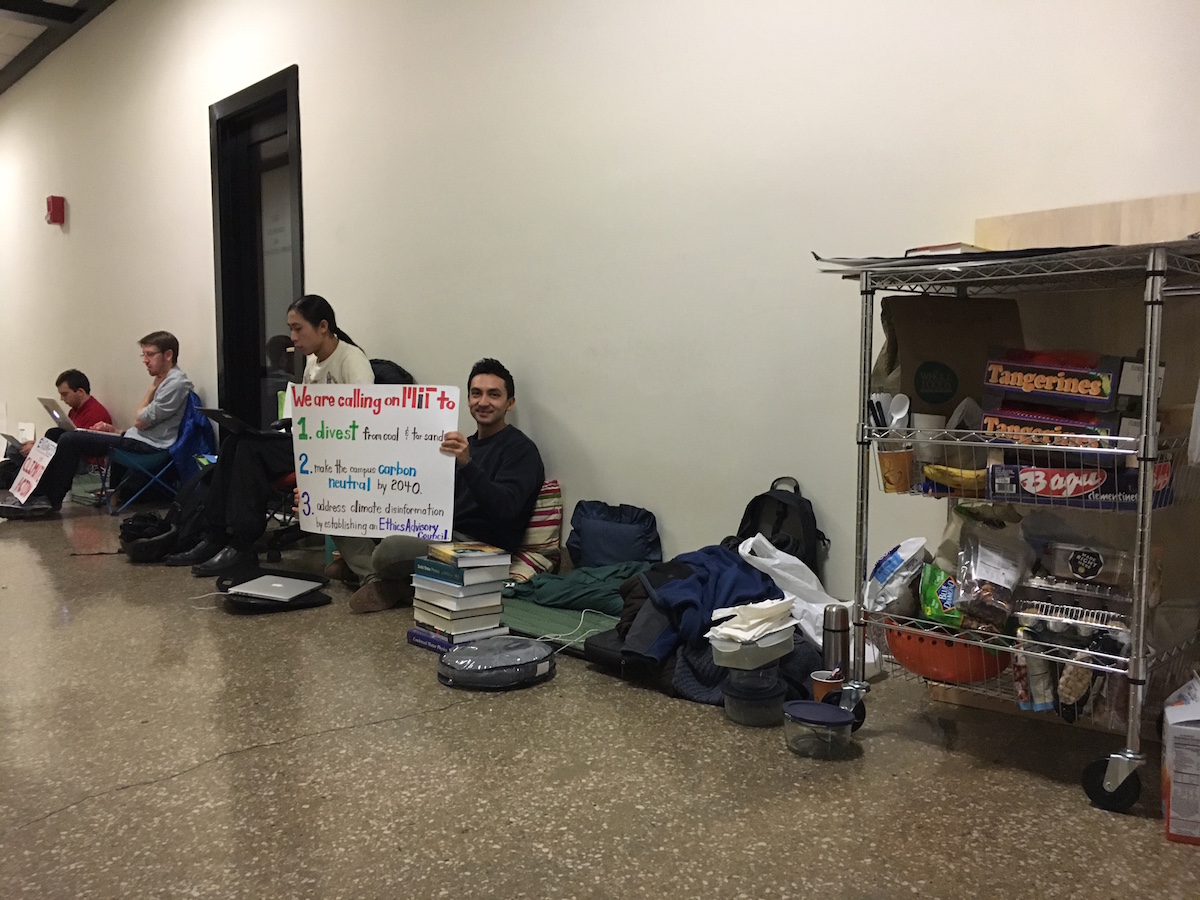MIT Climate Change Activists End Sit-in After 116 Days

Fossil Free MIT’s Geoffrey Supran and others on Thanksgiving night. / Photo by Chris Sweeney
Like most MIT students, Ben Scandella did the math. “I estimate that I’ve sat between 550 and 600 hours,” says Scandella, a spokesman for Fossil Free MIT, a student activist group that has been posted up outside President Rafael Reif’s office since late October.
But now, after 116 days, the protest has ended. The scientists-cum-activists have left the Infinite Corridor, having struck a compromise with the administration that includes the formation of a committee to advise on the university’s plan to address climate change.
“I’m obviously disappointed that the agreement doesn’t include more, but I’m proud of the work,” Scandella says. “It shows there’s a place for peaceful activism even at a technocentric institution like MIT, where the stereotype is that students spend all their time in the lab or in front of computers.”
The group was urging the school to stop investing its $13 billion endowment in dirty energy firms, particularly those trafficking in coal and tar sands. Not only do these companies contribute significantly to climate change, some of them have funded junk research intended to discredit the work of MIT faculty members. As one Fossil Free MIT member previously said, they “slander science.”
After more than a year of debating the divestment issue, MIT’s vice president for research, Maria Zuber, announced in October that the school would not be dumping any of its holdings in dirty energy firms. Zuber and other senior administrators reasoned it was better to engage with these companies to drive ahead research on climate change.
That announcement landed like a sucker punch to the gut for members of Fossil Free MIT. The very next day, October 22, they began their sit-in. And they sat. And they sat some more. For the first few months they slept in the hallway, divvying up their duties in shifts so that there were always at least two bodies outside the president’s office door, morning, noon and night. Then they scaled back, cutting out the overnights and taking shifts each day between 6 a.m. and 10 p.m.
The end of the sit-in is bittersweet for Scandella and his colleagues. “There was a community that grew in the hallway,” he says. “We wanted to lock this in so we can keep moving forward and change our energy structure so it’s not so directed at sitting in the hall.”
In addition to forming the advisory committee, administrators agreed to aspire to campus carbon neutrality as soon as possible. They also agreed to convene a forum on the ethics of climate change. Fossil Free MIT may be out of the hallway, but they are not dropping the issue and appear to be readying themselves for a spring push.
“For months now, I have been meeting regularly with several members of Fossil Free MIT, and I deeply admire their commitment to the cause and the honorable way they have pursued it,” Zuber said in a statement. “It is crucial that MIT seize a leadership role in addressing the urgent issue of climate change, and I believe that this agreement puts us in an even stronger position to lead effectively and successfully.”
According to Fossil Free MIT, 116 days marks the longest ever fossil fuel divestment sit-in. We’ll trust they did the math.


